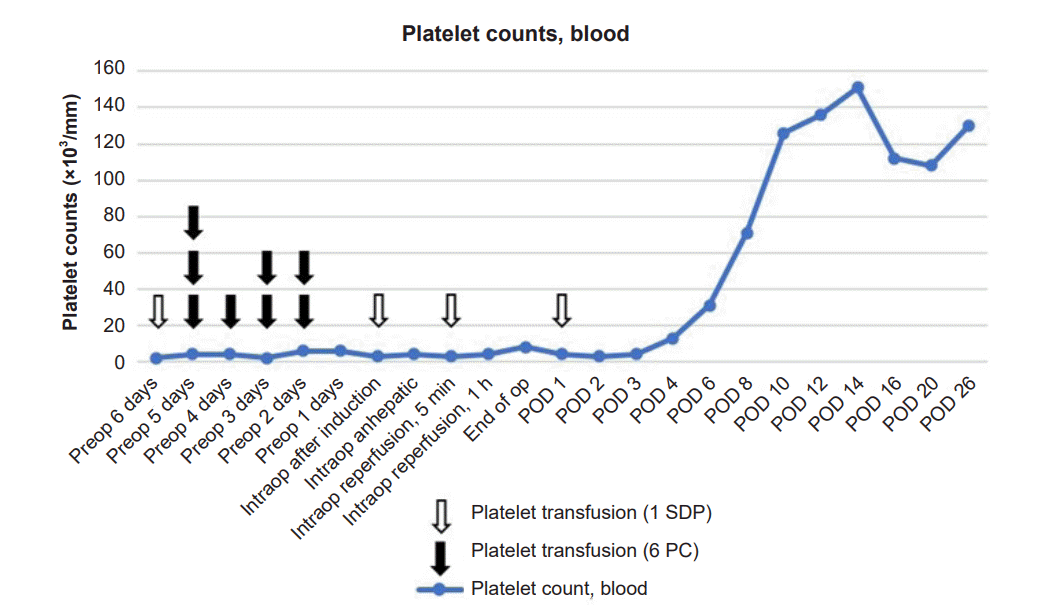Abstract
Background
Case
Conclusions
Notes
DATA AVAILABILITY STATEMENT
Data sharing not applicable to this article as no datasets were generated or analyzed during the current study.
AUTHOR CONTRIBUTIONS
Conceptualization: Yena Oh, Seung Yeon Yoo, Gyu-Seong Choi, Gaab Soo Kim. Methodology: Yena Oh, Seung Yeon Yoo, Gaab Soo Kim. Writing - original draft: Yena Oh. Writing - review & editing: Yena Oh, Seung Yeon Yoo, Gyu-Seong Choi. Supervision: SY Yoo, Gyu-Seong Choi, Gaab Soo Kim.
REFERENCES
Fig. 1.

Table 1.
| Time of sampling | Platelets (1,000/μl) | PT (INR) | aPTT (s) | Fibrinogen (mg/dl) | CT (s) | CFT (s) | α angle (degree) | MCF (mm) | LI 60 (%) |
|---|---|---|---|---|---|---|---|---|---|
| Preoperation | 3 | 2.19 | 56.8 | 110 | - | - | - | - | - |
| After induction | 3 | 2.36 | 58.9 | 55 | 2,729 | NA | 7 | 5 | 100 |
| Anhepatic start | 4 | 2.17 | 62.3 | 82 | 1,402 | NA | 11 | 15 | 90 |
| 5 min after reperfusion | 3 | 2.33 | 113.3 | 84 | 1,246* | NA* | 9* | 14* | 70* |
| 1 hour after reperfusion | 4 | 2.23 | 106.9 | 97 | Flat | Flat | Flat | Flat | Flat |
| End of operation | 8 | 2.05 | 69.4 | 117 | - | - | - | - | - |
| POD 1 | 4 | 1.19 | –15.2 | 292 | 1,601 | 6,561 | - | 21 | 100 |
| POD 5 | 16 | 1.05 | –13.7 | 170 | 1,029 | 1,071 | 15 | 28 | 100 |
| POD 6 | 31 | - | - | - | 996 | 736 | 21 | 30 | 98 |
PT (INR): prothrombin time (international normalized ratio) (reference range: 0.80–1.30), aPTT: activated partial thromboplastin time (reference range: 30–40 s), CT: clotting time (reference range: 300–1,000 s), CFT: clot formation time (reference range: 150–700 s), α angle: alpha angle (reference range: 30–70°), MCF: maximum clot firmness (reference range: 40–65 mm), LI 60: lysis index 60 (reference range: 76–96%), POD: postoperative day. NA: not available.
* Protamine-treated Fig. 1. Perioperative changes in platelet count.




 PDF
PDF Citation
Citation Print
Print



 XML Download
XML Download